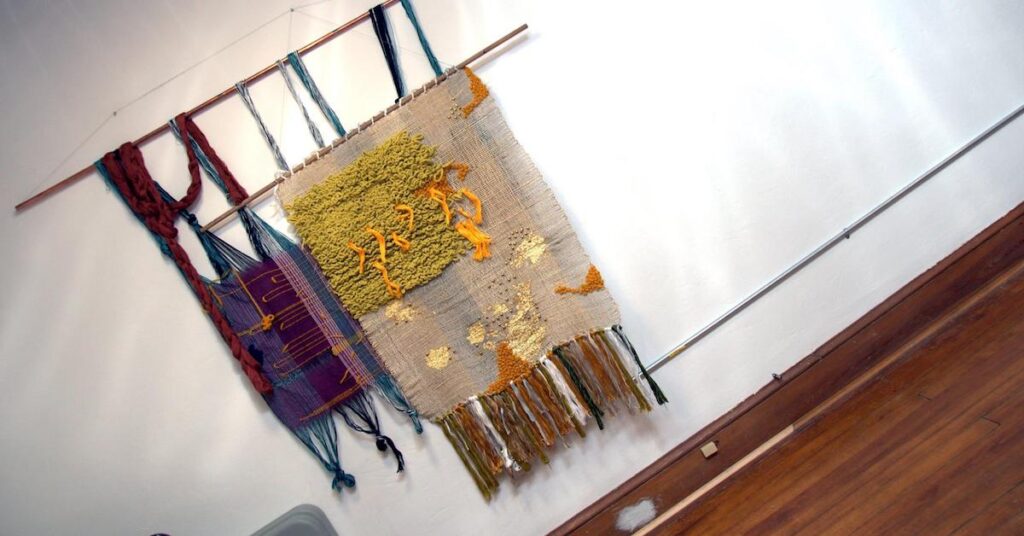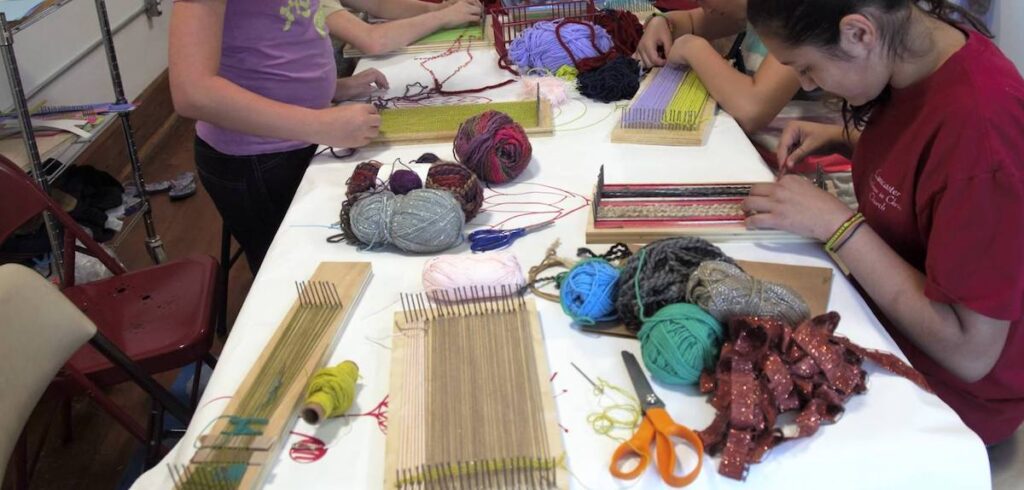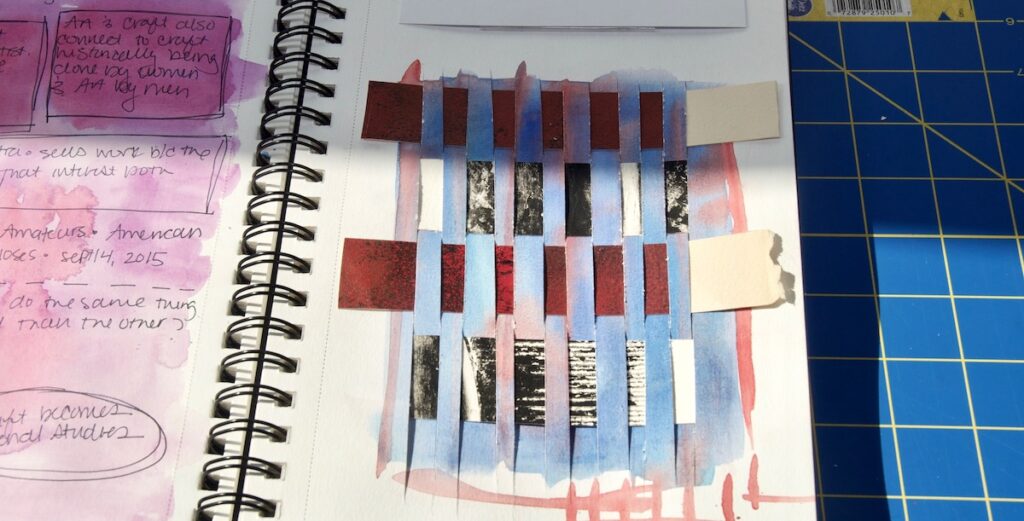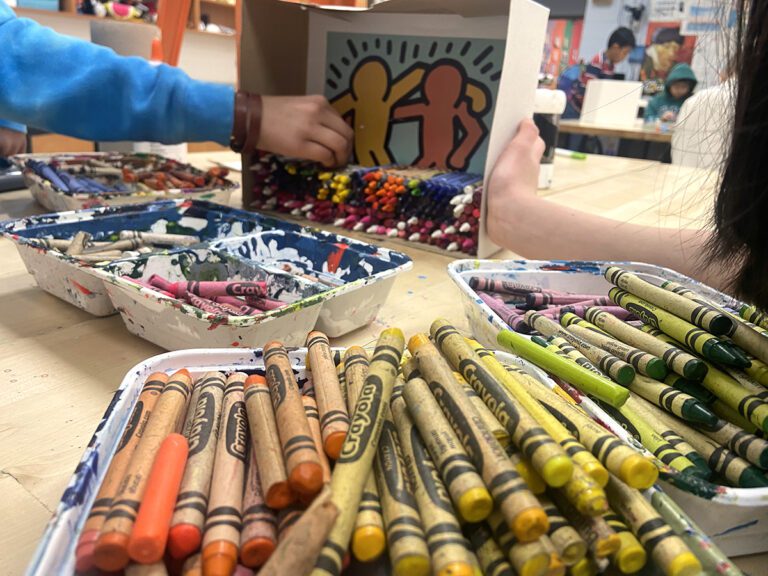What makes something “art” and something else “craft”? Is it the material? The process? The intention?
The idea of breaking art and craft into separate categories originated in the 1400s.
Before the term “artist” existed, work was created in workshop settings. A master artisan guided apprentices through the production process. Then, the patron often got the credit for the finished work.
However, starting around 1400, those in Florence, Italy began emphasizing innovation. In 1550, Italian painter, architect, historian, and writer, Giorgio Vasari further elevated the status of the artists with his book, Lives of the Most Excellent Painters, Sculptors, and Architects. He argued those creating original work were artists, and those still following guild traditions were artisans, artists lesser counterparts.
But what happens when artists are creating original work, and it’s still seen as craft?

This conundrum is often true for artists who work with media like ceramics, jewelry, glass, and especially fiber arts.
In fact, in the 1960s and ’70s, fiber artists made a strong push to move into the world of high art. They began to work with fiber materials in non-traditional ways. Agnieszka Lugowska explores this idea in her article, “The Art and Craft Divide- On the Exigency of Margins.” She examines how exhibitions like Woven Forms, Eccentric Abstractions, and String and Robe pushed to transition fiber arts from craft to art. However, it didn’t quite work out. Instead, fiber arts was pushed into limbo, not fitting neatly into either category.
Additionally, the ’60s and ’70s saw a resurgence of interest in fiber arts among the general population. In the United States, people used fiber art techniques like embroidery and crochet to personalize their clothing. Macrame surged in popularity. The prevalence among the general population hindered fiber arts’ emergence into the art world. Its everyday utility continued to categorize it as something requiring little thought or skill.
Today we continue to see the line between art and craft blur, as rugs, pottery, jewelry, and textiles make their way onto museum walls and the pages of history books. We also see makers continue to challenge boundaries, as they use traditional craft material and process to create original works of art.

The Role Gender Plays in the Divide
Is giving into the hierarchy of art and craft what’s best for our students? Or, is it a demonstration of bias or a lack of training in particular mediums? The idea is worth digging into, especially because the art and craft hierarchy reaches deeper than material and process. It also extends to gender. Often, “art” and the title “artists” are given to men while “craft” focuses on work created by women.
Lugowska also addresses this concept in her article when she writes, “Matter or ‘nature’ is given a significant form by the artist and is associated with the mind and idea, implicitly referring to the masculine, while craft, associated and textiles rather than the cognitive realm, implicitly refers to the feminine.”
Does your art room perpetuate the art and craft hierarchy and the underlying gender roles? If so, how does this impact your students?
4 Female Artists to Explore
The Role of Craft in Art Education

Hooking Students Through Crafts
While I’d always shared my work and told my students I was a weaver, it didn’t seem to sink in until they saw me on a cover of a magazine. Suddenly, I was famous. (One student even handed me a carefully folded note asking if I could pass it along to Justin Bieber. Surely, I knew him.)
As students realized being a textile designer could get them onto a cover of a magazine, and one step closer to dating Justin Bieber, my room filled with students eager to learn how to crochet.
Study hall quickly became “Introduction to Crochet.” I heard reports of students crocheting during class and at lunch tables. Perhaps most magical, however, was that the allure had spread to both male and female students. That year, the entire school had warm necks and heads.
While my students’ interest was sparked by the idea of fame and fortune, it was carried on by the joy of making functional objects.
This story begs the question, are we losing students who might have a love for creating by limiting the materials and techniques to which we expose them?
At my school, tapping into a medium students connected to and understood had more students creating outside of art class than ever before. It’s worth thinking about how we capitalize on this kind of enthusiasm.
Pushing Past Formula into Innovation
Craft is often categorized as repetitive, formulaic, and functional; innovation and originality are saved for art. But, it is possible to teach craft in an innovative way.
Let’s use crochet as an example.
Traditionally, the act of crocheting is repetitive and requires following a pattern. Yet, it doesn’t have to.
Here is one way you could teach students to think about crochet in an innovative way.
- Start by teaching a few basic stitches, to provide a foundation.
- Allow students to work through the design process: Discover, Define, Ideate, Prototype, Test, and Repeat.
- In the discovery phase, have students choose someone to design for. Have them think about the person’s needs.
- Then, have students work to define the specific problem they are trying to solve.
For example, if students are trying to discover how to stay warm in the winter, they may need to define further the conditions they’re talking about. Snowy? Wet? Windy? - Moving into ideation, have students think about all of the different things that might keep a person warm during a snowstorm.
They’ll likely start with things like hats, gloves, and scarves. Encourage them to think about where those items fall short. For example, some gloves aren’t waterproof or only keep hands warm for a short period of time. - Progressing into creating a prototype, have students begin to build patterns and explore materials, working together to design and create their ideas.
- Finally, have students test their pieces, and make adjustments if needed.
For many students, the opportunity to create something functional may be the key that unlocks the door to the world of art for them.
Once your students are invested, you can leave the functional behind and push even further. For example, take at the look at the artist Jo Hamilton. Hamilton crafts portraits and cityscapes with yarn and a crochet hook.
Students can innovate through crochet by developing patterns, creating stitches, and exploring alternative uses for crochet. They can also take the traditional stitches of crochet and apply them to new materials like wire, rope, bike tubing, or rubber cording.
Even paper weaving can be elevated.

Most students learn basic paper weaving in elementary school, often stopping there. Two artists who use paper weaving in interesting ways are Gale Jamieson and Michelle Grabner. Jamieson’s piece, “Pangea,” weaves together National Geographic maps creating a stunning pattern formed into a kimono. Grabner uses paper weaving to explore color and pattern.
Paper weaving comes with natural constraints, paper strips, and the framework of weaving. Present the constraints, then allow students to explore. A great way to plan out an elaborate pattern for paper weaving is to have students draw using graph paper. Color in squares to create a pattern, design, or image. Each square that is colored indicates that the paper needs to go over the warp, and each white square indicates that it should go under. If you’re a bit unsure about diving into a paper weaving project, start by giving it as a sketchbook prompt.
Let’s teach our students about art and craft being careful not to present one as better than the other. Instead, let’s celebrate each for its intended purpose while exploring the history of how they came to be. Keep in mind craft materials, and techniques only have to remain formulaic if we present and teach them as such.
Placing a needle in a student’s hand may just be the thing that unlocks the magic of art.
Are there mediums you avoid because they seem too “crafty”? What are they?
How can you take the medium from your answer above and present it to your students in a way that challenges them to think like an artist?
Magazine articles and podcasts are opinions of professional education contributors and do not necessarily represent the position of the Art of Education University (AOEU) or its academic offerings. Contributors use terms in the way they are most often talked about in the scope of their educational experiences.





